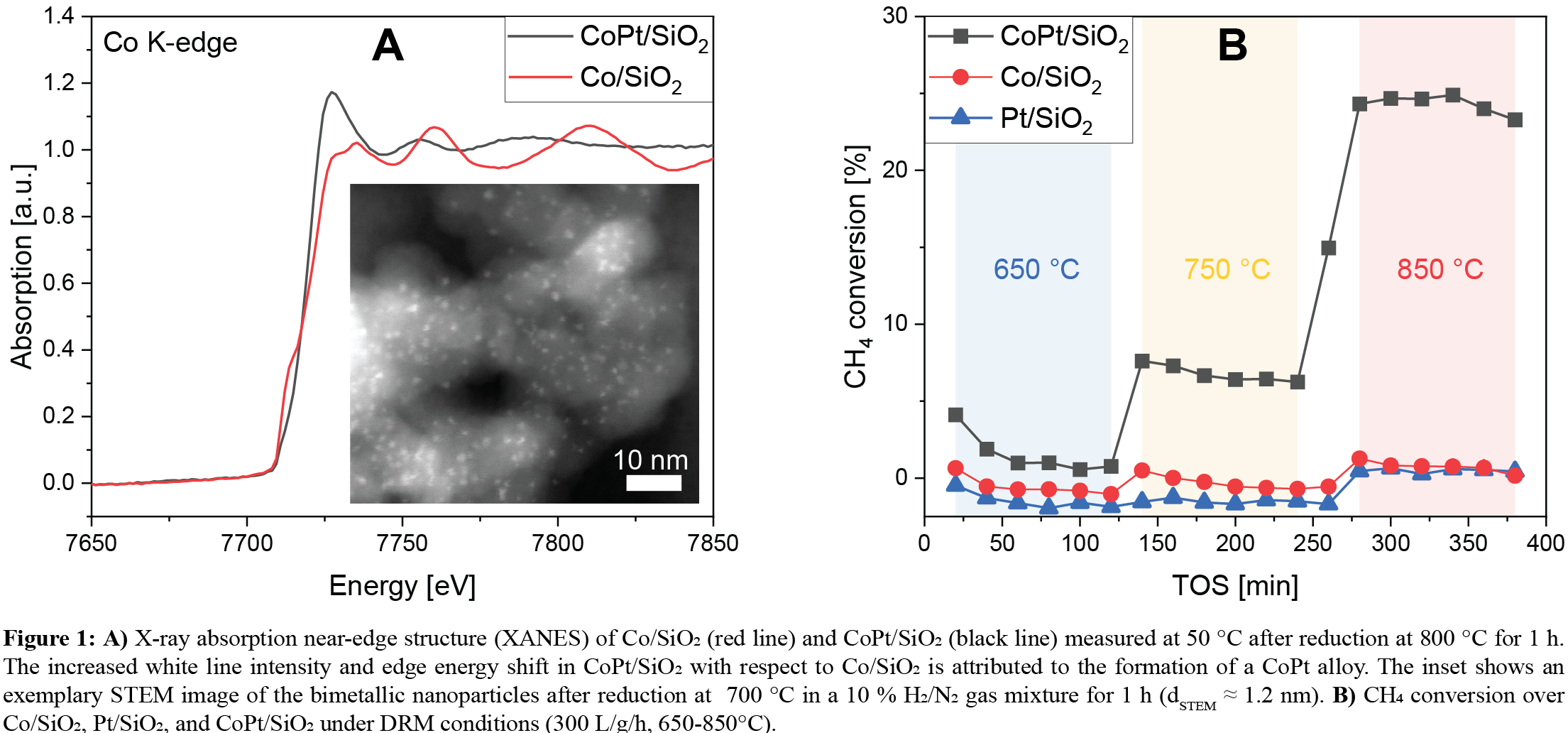Bimetallic CoPt Nanoparticles for the Dry Reforming of Methane: Understanding Structure-Performance Relationships
Bimetallic nanoparticles are an attractive alternative to the conventional monometallic systems, providing an elegant and versatile toolbox to modify the electronic and geometric structure[1] of the metals and in turn their catalytic activity.[2] Yet, structure-performance relationships which form the basis of a rationally guided design of effective bimetallic systems remain elusive. In this regard, the synthesis of well-defined bimetallic nanoparticles and their detailed characterization under reaction conditions will pave the way for more accurate structure-performance relationships. We use CoxPty based catalysts as model catalysts for dry reforming of methane (DRM) – a reaction catalyzed by monometallic noble or transition metals including Ru, Rh, Pt, Ni, and Co (typically supported on metal oxides). The aim of the study is to understand how modifications in the structure of the bimetallic nanoparticles influence their DRM performance. Here, we synthesized small CoxPty (and the monometallic references) supported onto SiO2 through strong electrostatic adsorption.[3] X-ray absorption spectroscopy of CoPt/SiO2 revealed differences in the XANES region (Fig. 1A, similar observations in the Pt L3-edge) and in the extended X-ray absorption near-edge structure (EXAFS) in comparison to monometallic Co/SiO2. This result indicates the formation of alloys and is explained by a charge transfer from Co to Pt.[4] By scanning transmission electron microscopy (STEM, Fig. 1A inset) and pair distribution function analysis of the X-ray total scattering data, we show that the nanoparticle size is ca. 1.2 nm after the reduction at 700 and 800 °C, respectively.

We observed a very high DRM activity for catalysts with x:y ~ 1:1 (i.e. CoPt/SiO2) when compared to the monometallic counterparts (Fig. 1B). Surprisingly, monometallic Co and Pt show very low DRM activities at all temperatures tested, while the DRM activity of CoPt/SiO2 is appreciably higher at 750 and 850 °C. These results suggest that the formation of a Co-Pt alloy, leading to a material with a modified electronic structure compared to the monometallic references, leads to a highly active DRM catalyst.